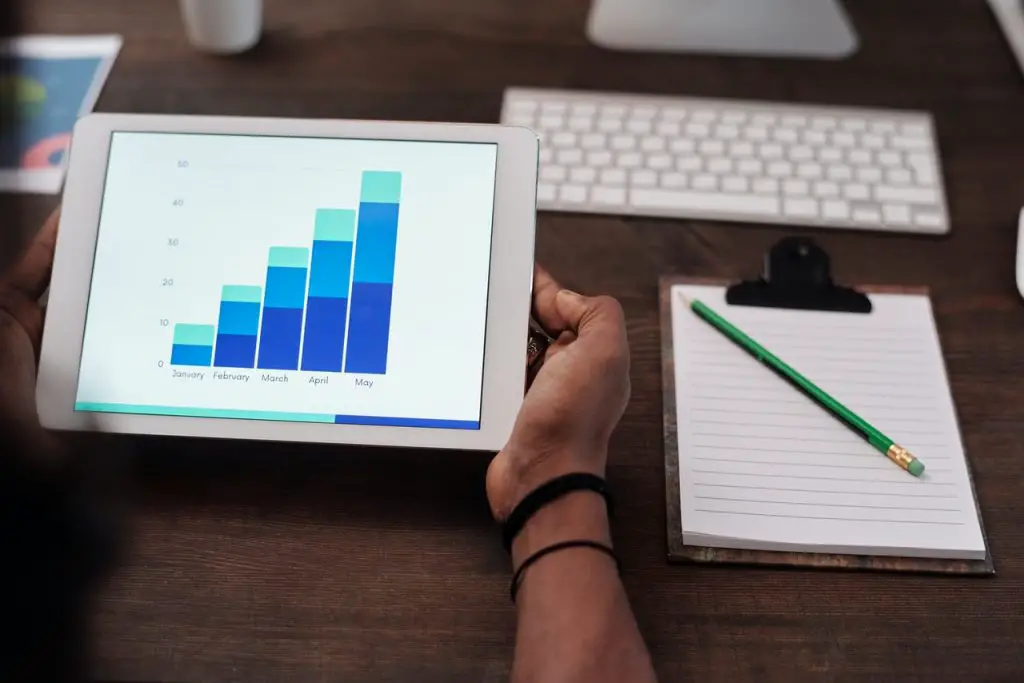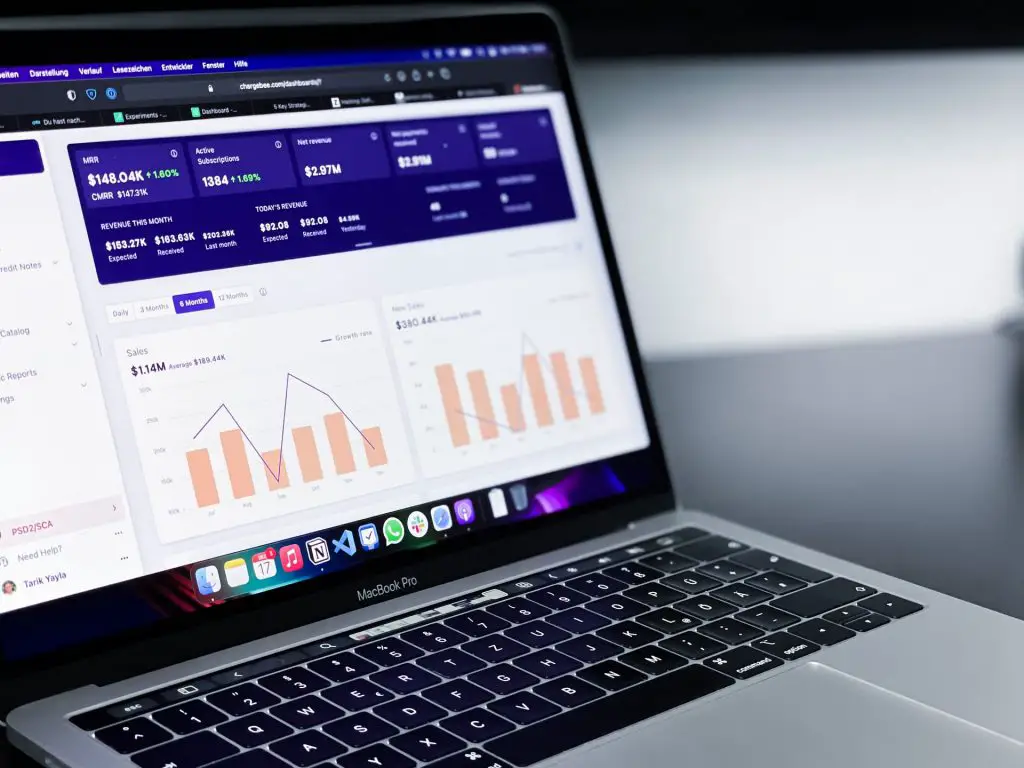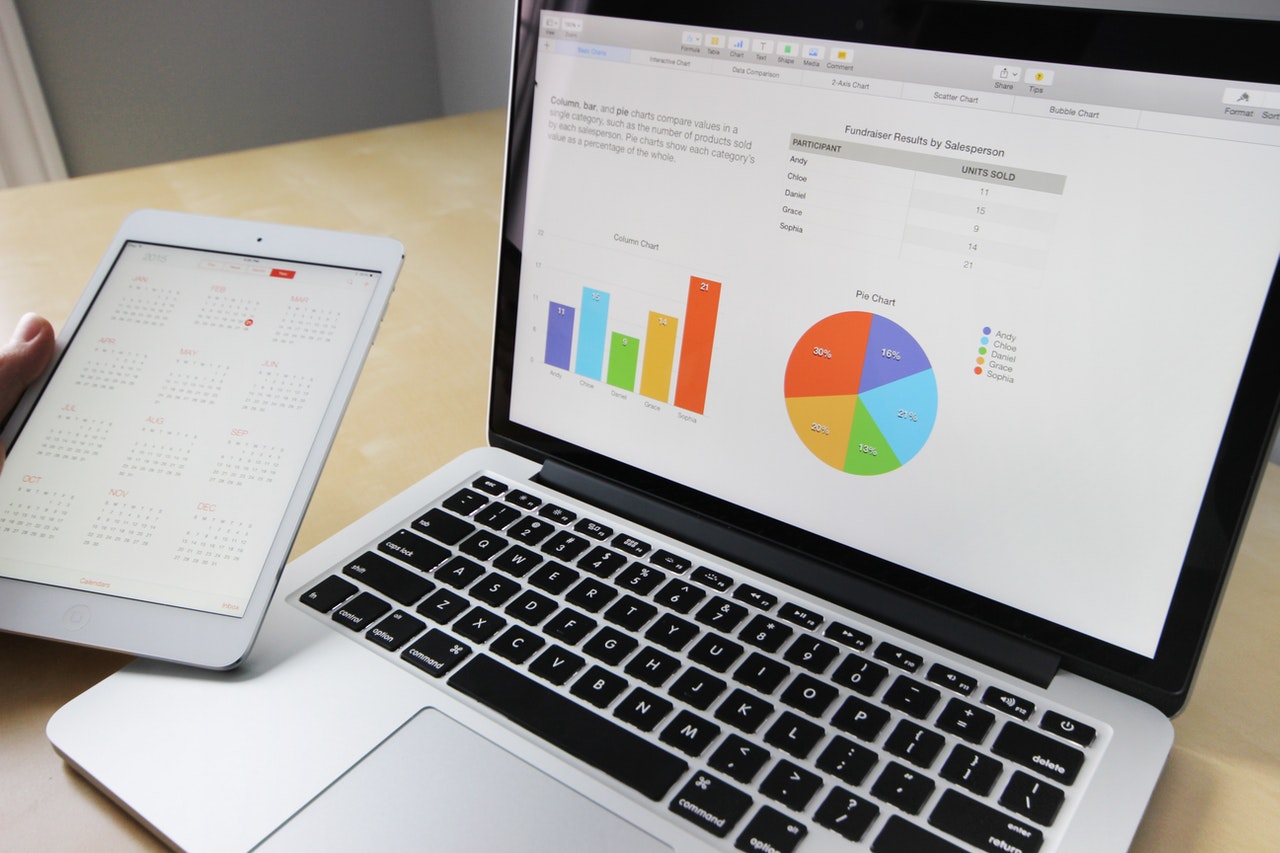Are you looking for a comprehensive guide to help you understand content distribution? With over 200 topics covered, this article will surely provide you with the answers. From understanding the basics of content distribution to learning about different types of audiences to discovering ways to optimize your campaigns for maximum efficiency, this article covers it all.
Uncover the latest tips and tricks as well as in-depth insights into how you can maximize your content’s reach and success. In addition, find out how a wide range of factors, from audience size to geolocation, may impact your campaigns.
Read on to get started on the journey to becoming an expert in content distribution.
What is Content Distribution?
Content distribution, also known as content marketing, is a vital part of any comprehensive strategy. It involves crafting top-notch content that speaks to your target audience and spreading it across various channels – owned, earned, and paid. Content distribution is essential in successful content marketing since it helps boost brand awareness and reach more people, which can ultimately help you hit business objectives.
Creating the content comes first. This could be anything from blog posts to white papers or videos – whatever resonates with your intended crowd. Afterward, you must distribute it using the proper channels: owned sources like websites or blogs; earned visibility through third-party sites such as the most prominent social networking site or media; or paid advertising for maximum exposure. Each channel has its pros and cons, so consider carefully which one will work best for your plan.
Once the material is out there, track performance by monitoring key performance indicators (KPIs). That way, you’ll know what messages connect with your audience and which channels are most effective so you can adjust accordingly to optimize results.
Finally, there are plenty of tools available to assist with content distribution – from owned platforms like websites/blogs to earned ones such as paid social media and networks or even paid options like Google AdWords plus measurement tools including Google Analytics, etcetera.
In summary, Content distribution is a must-have element of any good content marketing strategy because it increases brand recognition while reaching more people who may become customers down the line – helping businesses achieve their goals in the process!
Why is Content Distribution Important?
Content distribution is like a bridge connecting businesses to their intended audience. It plays an integral role in any content marketing strategy, helping to maximize ROI and ensure the right people are reached.
For small businesses, it’s a powerful tool for increasing brand recognition and authority. Plus, it drives website traffic and organic visits – two essential elements of success. Content distribution also allows companies to create and share assets such as blog posts, press releases, or other media formats.
When done correctly, content distribution can reach the desired crowd while driving organic traffic simultaneously. Additionally, it enables businesses to measure the performance of their content so they can adjust promotion efforts accordingly. Furthermore, this method helps increase visibility on search engines and generate more organic channels for your material.
Content distribution is critical for successful content strategies since it lets companies target their audience accurately while promoting their work effectively. By selecting appropriate channels and tools for sharing information with others, you’ll make sure that high-quality materials reach the right people in no time!

Types of Content You Can Distribute
Content distribution is a must for any content marketing plan. Without it, your message won’t reach the right people. Various types of content can be shared through owned, earned, and paid channels. These range from text-based materials like blog posts, articles, and whitepapers to visual elements like videos, infographics, and images. Depending on what you’re creating, different content distribution channel methods may work better than others.
So how do you get started? Owned channels include your website or blog, email list, or social media accounts – think posting a blog post on your site or sharing it with followers on Twitter.
Earned distribution involves building relationships with influencers to get featured in other publications or leveraging SEO tactics to appear higher in search engine results. Paid distribution is when you pay for ads and sponsored content to reach a wider audience – this could be Google Ads or sponsored posts on news sites.
When deciding which channels to distribute content, consider who you’re targeting – if it’s younger audiences, then focus more heavily on Instagram, Snapchat, and TikTok; if professional audiences are the goal, then LinkedIn might be the best bet instead of Google Ads, etc. It’s also important to consider the type of material being created so that it performs well across each media channel used.
Quality should always come first when crafting a successful strategy: organic channels like search engines and social media can help promote your material, but don’t forget about paid options, such as Google Ads or sponsored pieces elsewhere online! By considering all these factors carefully, you’ll have an effective plan to ensure your target audience sees what matters most: quality content!
Content Distribution Channels
Content distribution is a vital part of content marketing, like a river that flows through different channels to reach its destination. It’s important to understand the differences between owned, earned, and paid channels to create an effective strategy.
Owned channels are those controlled by the content creator – websites, blogs, and social media accounts. These provide a unique opportunity for direct connection with your audience and gaining insights into their preferences. Plus, they’re usually more cost-effective than paid options!
Third parties share earned channels – think social media shares or email newsletters. They give you access to wider audiences and help build brand awareness as well as gain links from other sites.
Paid distribution involves paying for visibility on platforms such as search engine results pages or influencer marketing campaigns. This allows you to target specific audiences while measuring success along the way – plus, it can be used to boost organic efforts, too!
To make sure your content reaches its intended destination, use a mix of all three types of distribution channels: owned, earned, and paid! That way, you’ll maximize the effectiveness of your efforts without getting lost in translation!

Owned Content Distribution Channels
Owned content distribution channels are like a content creator’s own personal megaphone. Websites, blogs, and social media accounts provide an opportunity to reach the right people in a controlled way.
For example, websites and blogs can be used to promote content and make it easily accessible to users. Social media accounts can also spread the word about and distribute your content – allowing you to establish yourself on the most prominent platforms!
The advantages of using owned channels are clear: increased visibility, control over your message, and cost-effectiveness. You get direct access to your target audience while still having full control over what you share with them. Plus, creating and maintaining these channels is usually more affordable than paid options!
So, how do you use owned distribution channels? Well, you could publish content on your website or blog, share it on social media, or even send out email newsletters! And don’t forget that these channels allow you to engage with your audience, too – building relationships along the way.
When crafting an owned distribution strategy, though, there are some things worth considering: What type of content will I distribute? Who am I targeting? Which channels should I use? What types of formats should I employ? How best can I distribute my material? By taking all this into account when planning – success is sure to follow!
Earned Content Distribution Channels
Earned content distribution channels are the golden ticket for content creators, offering them a chance to reach a wider audience and build brand awareness. Think of social media, email newsletters, and review websites – these are all examples of earned content distribution channels that can help you increase visibility and gain links from other sites. Plus, they allow you to get your message to your intended audience and drive organic traffic.
Common earned content distribution channels include Reddit, TikTok, Gaggleamp, and Cold Outreach. Reddit is an online platform where users can share news stories or discuss topics with others; it’s great for getting your content seen by more people.
TikTok is another popular option – here, you can create short videos that will engage with viewers in no time! Gaggleamp helps spread the word about your work through employee advocacy networks, while Cold Outreach allows you to contact relevant influencers who may be willing to share what you have created.
To make sure that earned content distribution works its magic for you as much as possible, consider who your target audience is first off; then, decide which channels would be best suited for reaching them before thinking about what type of material should be shared on each one. Finally (and most importantly!), ensure that whatever gets posted is both relevant and high-quality content to have maximum impact when viewed by potential customers or clients!
Paid Content Distribution Channels
Paid content distribution is like a megaphone for content creators, allowing them to shout their message to the world. Commonly paid distribution channels include Facebook Ads, Google Ads, Twitter Ads, and Instagram Ads – each offering unique opportunities to reach specific audiences. But what should you consider when creating a successful campaign?
The type of content being distributed is critical, as well as the intended audience and available channels. Content creators must also decide which media channels best suit their needs, what media formats they should use, and how they will distribute them. Taking these factors into account is essential in developing an effective paid content distribution strategy that will get your message heard loud and clear!
How to Choose Between Content Distribution Channels
Choosing the proper content distribution channels is a crucial part of crafting an effective content strategy. To get the best results, it’s essential to consider your target audience and their preferences, as well as the type of content you’re distributing. You’ll also need to consider the size of your target audience, existing content assets, business goals, and resources available for promotion.
When selecting these channels, consider what content types and media formats work best with them – for example, if you’re sharing images, Instagram and Pinterest are likely to be most successful.
Additionally, depending on how large or small your target audience is will determine whether paid or organic platforms should be used. And finally, when deciding which ones to use, factor in what kind of content promotion you want – such as organic traffic or blog post shares – plus the cost associated with each channel!
Understanding your target audience and researching/evaluating different channels is critical when creating a solid content distribution strategy that will ensure success!

Building a Winning Content Distribution Strategy in Six Steps
Developing a successful content distribution strategy is essential for any business that wants to get the most out of its content marketing efforts. Content distribution is like a game of chess – it requires careful planning and execution, as well as an understanding of the different pieces you can move and the different channels available to you.
To build a winning content distribution strategy, there are six key steps: research your target audience, decide what content to distribute first, select media channels, determine which KPIs (Key Performance Indicators) to track, adjust your promotional message, and measure performance. Let’s take a closer look at each step!
Researching your target audience is a must-do when creating a content distribution plan. Knowing who they are and what interests them helps you create content that resonates with them – think demographics, interests, preferences, and types of content they prefer. Gathering data on website traffic and social media followers also gives insight into what kind of material will successfully reach your intended readership.
Once you have gathered data on your target audience, it’s time to see what type of content you can distribute first. Setting SMART goals (Specific, Measurable, Achievable, Relevant & Timely) ensures that all efforts are focused towards clear objectives – this way, nothing gets lost in translation! Additionally, analyzing competitors’ key channels helps identify which ones should be used for maximum reachability among the desired demographic.
KPIs (Key Performance Indicators) are essential in any effective content distribution strategy since they help measure how well things are going so adjustments can be made. Website traffic and organic traffic should be tracked, but other metrics, such as leads generated or conversions, should not go unnoticed either!
Adjusting one’s promotional message based on testing results from various messages is another excellent way to ensure success when distributing one’s material online – after all, no two audiences respond precisely alike, so why treat them like they do? Analyzing data from previous campaigns allows us to refine our approach until we hit just the right spot with our intended readership!
Finally, measuring performance by tracking KPIs provides valuable feedback about how successful our efforts have been thus far, allowing us to make necessary changes while still keeping sight of our original goal(s). This way, we know we’re getting the most out of every piece distributed online!
In conclusion, developing a successful content distribution strategy involves researching one’s target audience thoroughly before deciding which type/kinds/forms/styles, etc., of material should be distributed through carefully selected media channels while tracking relevant KPIs along with adjusting promotional messages according to test results before finally measuring performance by monitoring said KPIs – only then can businesses genuinely maximize their potential when it comes down to their digital marketing endeavors!
Step #1: Research Your Target Audience
Researching your target audience is an essential first step to creating a successful content distribution strategy. Knowing who your target audience is and what they are interested in will help you craft content that resonates with them. Gathering data on demographics, interests, preferences, and the type of content they prefer can give you insights into how to reach them. Additionally, analyzing website traffic and social media followers can provide clues about which types of content will be most effective for reaching your desired audience.
By understanding your target audience’s needs and interests through data gathering, you can develop buyer personas and create content that speaks directly to them. This knowledge also helps determine which channels are best suited for distributing this content – such as social media platforms, blogs, search engines, or email marketing – so it reaches the right people at the right time.

Step #2: See What Content You Can Distribute First
Setting SMART goals is like a compass for your content creation and distribution efforts, guiding you to success. What is SMART? It stands for Specific, Measurable, Achievable, Relevant, and Timely – all the ingredients of a practical goal. Your goals should be clear and measurable, with achievable deadlines relevant to the overall strategy.
Creating content tailored to your target audience’s interests will help you get the most out of your efforts, too! By creating timely, relevant, and engaging content, you can ensure it reaches the right people and drives engagement.
Next step: selecting media channels! Analyzing competitors’ key channels can give you an idea of which ones they’re using to reach their target audience – this could help you decide which channels work best for you.
Additionally, data gathered from audience research can help determine which channels have more potential to reach your intended crowd. Different platforms offer different advantages, such as organic or paid reach, so consider each one carefully before deciding; paid distribution options like social media ads or native advertising may also be helpful if you want quick results!
KPIs (Key Performance Indicators) are essential for any content distribution strategy – they measure performance so adjustments can be made accordingly. Website and organic traffic are critical KPIs, but don’t forget other metrics such as leads generated, brand awareness, or conversions! This data helps identify what pieces perform best while tracking KPIs ensures business goals are met and lead generation is driven successfully.
Adjusting promotional messages is another way of getting the most out of content distribution efforts; testing different messages while adjusting strategies based on results will ensure nothing goes unnoticed!
Analyze data on what pieces drive the most traffic, then refine the message accordingly; this way, you’ll better target desired audiences, ensuring maximum efficiency in your marketing endeavors! Finally, measuring performance once distributed – track KPIs to understand how well each piece of content performs, then adjust strategies according to findings; this helps improve overall effectiveness by identifying areas needing improvement plus refining message targeting desired audiences accurately every time!

Step #3: Select Your Media Channels
When selecting social media channels, what should you consider? Competitor analysis can be a great way to understand which channels are best for reaching your target audience. Research the channels your competitors use and analyze website traffic and social media followers to determine which ones will work best for you.
Step #4: Decide Which KPIs To Track
When creating a content distribution strategy, it’s like navigating a maze – you need to know which way to turn. Key Performance Indicators (KPIs) are the map that helps you understand the success of your content distribution efforts and provide the data needed for adjustments.
Website and organic traffic are essential KPIs to track, showing how far your content has reached. Additionally, tracking metrics such as leads generated, brand awareness, and conversions can help measure the effectiveness of your strategy.
Finally, it is essential to track KPIs relevant to business goals – like finding buried treasure in uncharted land.
Step #5: Adjust Your Promotional Message
Adjusting your promotional message is critical to creating a successful content distribution strategy. What does the process involve? Understanding which pieces of content perform best, which messages resonate with your target audience, and which organic distribution channels drive the most traffic.
Ask yourself: by testing and adjusting your promotional message accordingly, can you get the most out of your content distribution efforts? Absolutely! Testing and adjusting promotional messages ensures that you maximize success in your content distribution strategies.
Step #6: Measure Your Performance
Tracking KPIs is a must for any content marketing strategy. By monitoring key performance indicators (KPIs), you can measure the success of your content distribution process and make changes as needed. This includes collecting data on website traffic, organic traffic, brand recognition, leads generated, and conversions.
But that’s not all – tracking metrics such as lead generation, brand awareness, and conversions is also essential. With this information, you’ll be able to identify which pieces of content are performing best and how your overall content distribution plan is doing.
By using this data to adjust your approach, you can get the most out of your content marketing efforts! So why wait? Start tracking KPIs today!
Top Content Distribution Tools and Platforms
Content distribution is like a puzzle piece in any content marketing strategy. It helps to build brand recognition, drive visitors to your website, and generate leads. Content distribution tools and platforms are designed to assist marketers in spreading their content across the right channels to reach their desired audience. By using these tools, marketers can distribute their content more effectively, efficiently, and cost-effectively.
Content distribution tools and platforms offer a variety of features that can be used for distributing content – from curation and scheduling to influencer marketing, automated sharing, and performance measurement tools. They also allow marketers to customize their material, target the correct crowd, and measure results.
When selecting content distribution tools and platforms, it is essential for marketers to consider the features and pricing plans of each tool; they should also think about what type of content they want to be distributed through which channels will give them the best outcomes for their material.
The perfect combination of tools & platforms can help marketers reach out to their target audience while maximizing their efforts in distributing content!
Owned Distribution Platforms
Owned distribution platforms are content distribution tools and platforms that are owned by the company or organization distributing the content. These tools allow marketers to efficiently distribute content across their owned channels, such as their website, blog, social media accounts, and email list. Popular owned content distribution platforms include Relay, Hootsuite, Wisestamp, Mailshake, Gaggleamp, and Socialbee.
Relay is a content distribution platform that allows marketers to create and share content on their channels easily. It also provides analytics to track the performance of content and optimize campaigns. Hootsuite is a social media management tool that allows marketers to manage multiple social media accounts in one place.
It also allows marketers to schedule and publish content across multiple channels. Wisestamp is an email signature management tool that allows marketers to create and manage email signatures across multiple channels. Mailshake is a cold outreach tool that can be used to reach out to potential customers and partners. Gaggleamp is a platform that allows marketers to create, manage, and track employee advocacy campaigns. Socialbee is a content curation and scheduling tool that helps marketers save time by automating content distribution.
The pricing plans for these owned distribution platforms vary but typically range from free to premium subscriptions. The advantages of using owned distribution platforms include the ability to control the content, target the right audience, and measure results. The downside is that it can be difficult to gain organic reach with owned channels, and there is a cost associated with using paid distribution and owned platforms.
Earned Distribution Platforms
Earned distribution platforms are powerful content distribution tools that help marketers reach their target audience through earned media, such as organic search and social media. Popular platforms include Clicktotweet, Quuu Promote, and Zest – each offering unique features to share content on social media with analytics to track performance and optimize campaigns.
Prices range from free to premium subscriptions, but the time-consuming process of gaining organic reach comes with no guarantee of success. Despite this, using these platforms can be beneficial in terms of reaching a larger audience and generating organic traffic.

Paid Distribution Platforms
Paid distribution platforms are like a bridge connecting marketers to their target audience. Outbrain, Taboola, and Revcontent are the most popular ones.
Outbrain offers content curation, scheduling, and influencer marketing services – plus analytics to track performance and optimize campaigns. Similarly, Taboola provides content curation, scheduling, influencer marketing – as well as analytics for tracking performance and optimizing campaigns. Revcontent also has these features but with native advertising instead of sponsored content.
The pricing plans vary from pay-per-click (PPC) to subscription models. The advantages? Reaching a larger audience faster with more immediate results! But there’s no guarantee of success – so it can be expensive, too.
Performance Measurement Tools
Performance measurement tools are like a compass for marketers, helping them to navigate the success of their various content distribution channels and efforts. Web analytics tools such as Google Analytics can chart metrics like page views, time on page, and conversions – allowing marketers to identify which channels are working best and what content is performing well.
Google Analytics also provides insights into user demographics, device usage, and website traffic – giving marketers an understanding of who they’re targeting with their content. Post-tracking tools measure social engagement, counting shares, likes, and comments on social media posts so campaigns can be optimized for maximum reach and engagement.
Performance measurement tools provide invaluable insight into website traffic, organic search rankings, and social media followers – enabling marketers to track the performance of their content while optimizing campaigns for maximum impact.
Summary
Content distribution is an indispensable element of modern content marketing and a successful content strategy, which helps companies to reach their target audience with relevant messages. With the advent of digital media, there are multiple owned, earned, and paid channels available for content distribution, each with its own strengths and weaknesses.
Choosing the best distribution channel requires an understanding of the target audience’s interests, the company’s objectives, the content’s performance, the available resources, the type of content promotion desired, and the cost.
A successful content distribution strategy can be built by following six steps: researching the target audience, selecting media channels, promoting content, deciding on KPIs to track, adjusting promotional messages, measuring performance, and using content distribution tools and platforms.
Content distribution strategies involve hard work, but when done right, they will result in increased brand awareness, higher engagement rates, and, ultimately, more conversions.
Frequently Asked Questions
Can I repurpose my content for various distribution channels?
Yes, repurposing content allows you to adapt the same content for different channels. For example, you can turn a blog post into a video, infographic, or podcast to reach a wider audience.
What are some best practices for effective email content distribution?
Personalize your emails, segment your email list, craft compelling subject lines, and use clear CTAs to optimize email content distribution.
How can I leverage influencer marketing in content distribution?
Collaborate with influencers in your niche to share and promote your content. Influencers can help extend your content’s reach and credibility among their followers.
What role does SEO play in content distribution, and how can I optimize for it?
SEO enhances content discoverability. Optimize your content for relevant keywords, create quality backlinks, and improve on-page SEO elements to boost your content’s ranking in search results.
Can you recommend content distribution strategies for niche or industry-specific content?
Tailor your distribution strategy to your niche by engaging with relevant communities, forums, and industry publications. Seek out partnerships and collaborations with niche-specific influencers and organizations.

